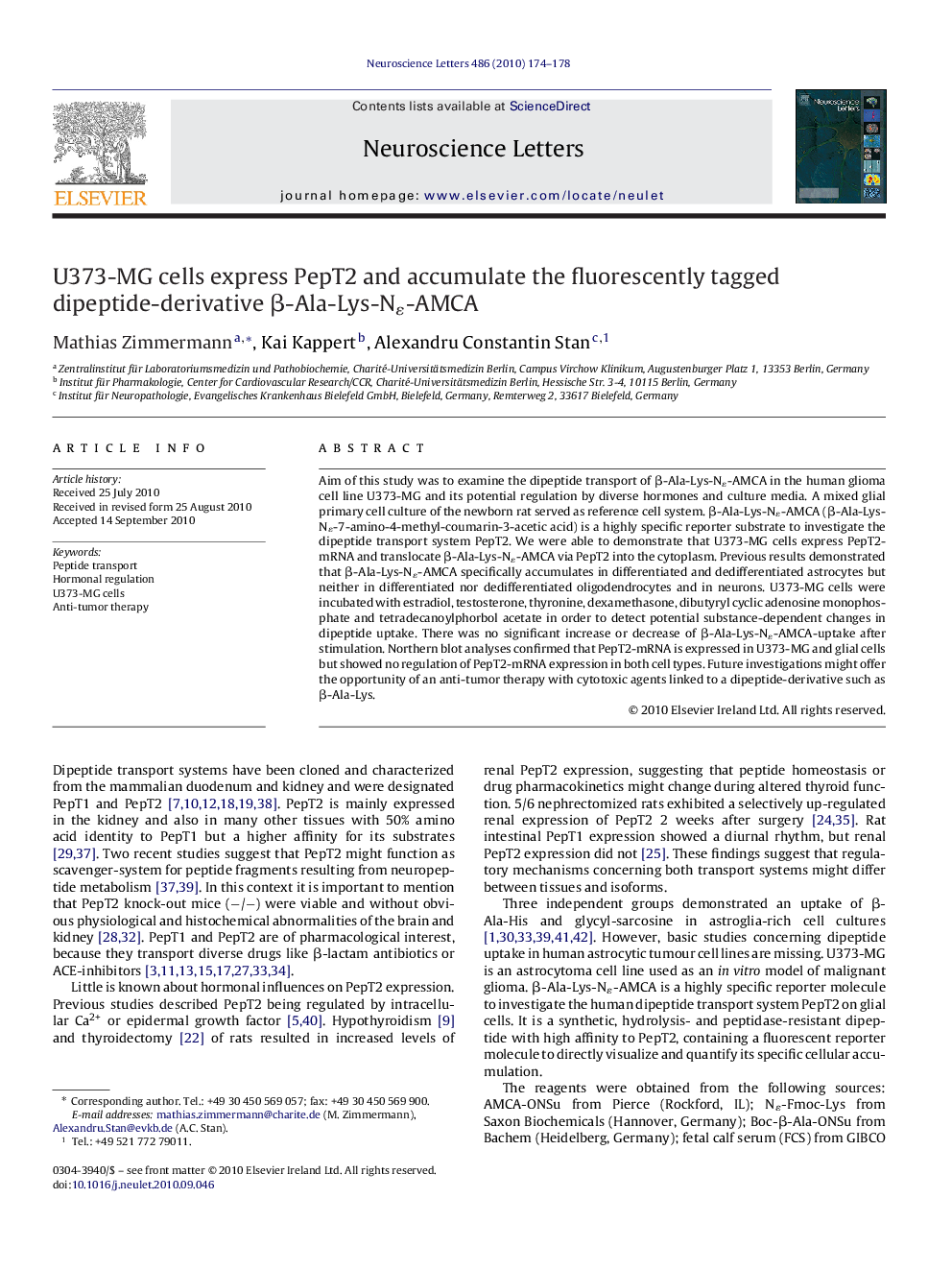| Article ID | Journal | Published Year | Pages | File Type |
|---|---|---|---|---|
| 4345455 | Neuroscience Letters | 2010 | 5 Pages |
Aim of this study was to examine the dipeptide transport of β-Ala-Lys-Nɛ-AMCA in the human glioma cell line U373-MG and its potential regulation by diverse hormones and culture media. A mixed glial primary cell culture of the newborn rat served as reference cell system. β-Ala-Lys-Nɛ-AMCA (β-Ala-Lys-Nɛ-7-amino-4-methyl-coumarin-3-acetic acid) is a highly specific reporter substrate to investigate the dipeptide transport system PepT2. We were able to demonstrate that U373-MG cells express PepT2-mRNA and translocate β-Ala-Lys-Nɛ-AMCA via PepT2 into the cytoplasm. Previous results demonstrated that β-Ala-Lys-Nɛ-AMCA specifically accumulates in differentiated and dedifferentiated astrocytes but neither in differentiated nor dedifferentiated oligodendrocytes and in neurons. U373-MG cells were incubated with estradiol, testosterone, thyronine, dexamethasone, dibutyryl cyclic adenosine monophosphate and tetradecanoylphorbol acetate in order to detect potential substance-dependent changes in dipeptide uptake. There was no significant increase or decrease of β-Ala-Lys-Nɛ-AMCA-uptake after stimulation. Northern blot analyses confirmed that PepT2-mRNA is expressed in U373-MG and glial cells but showed no regulation of PepT2-mRNA expression in both cell types. Future investigations might offer the opportunity of an anti-tumor therapy with cytotoxic agents linked to a dipeptide-derivative such as β-Ala-Lys.
Research highlights▶ U373-MG cells express hPepT2 protein. ▶ U373-MG cells express hPepT2-mRNA. ▶ Peptide transport of glioma and glial cells via hPepT2 is not hormone-dependent. ▶ Peptide uptaking glioma cells are from astrocytic lineage. ▶ β-Ala-Lys-Nɛ-AMCA is excellent to study glioma cell physiology.
